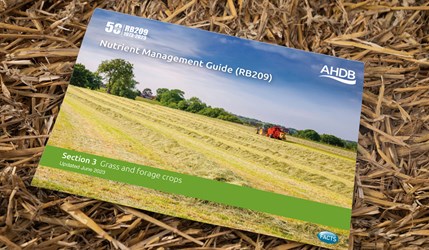- Home
- Knowledge library
- RB209 Section 3 Grass and forage crops
RB209 Section 3 Grass and forage crops
How to determine the nutrient requirements of grass and forage crops.
The Nutrient Management Guide (RB209) helps you make the most of organic materials and balance the benefits of fertiliser use against the costs - both economic and environmental. It explains the value of nutrients, soil and why good nutrient management is about more than just the fertilisers you buy; it can save you money as well as help protect the environment.
This publication was last updated in June 2023
Available in print
RB209 enquiries
Other relevant guides
Topics:
Sectors:
Tags:


